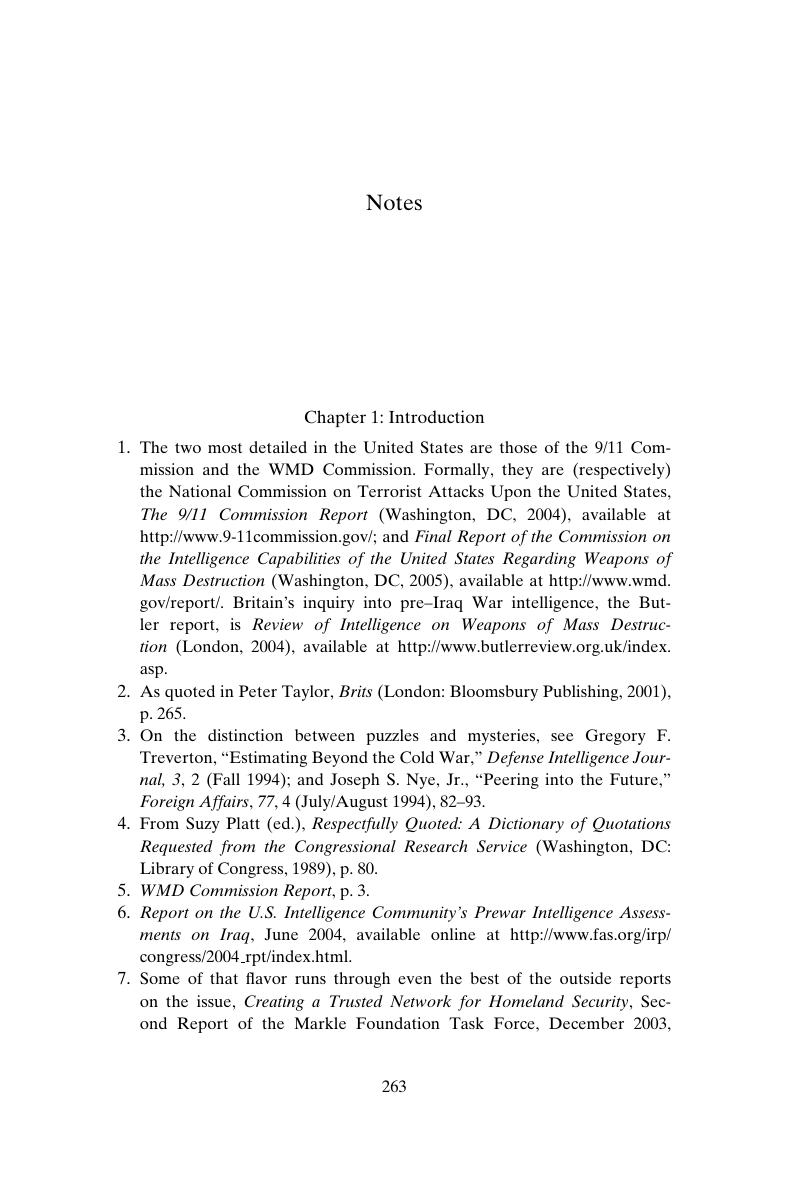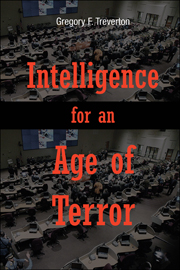Book contents
- Frontmatter
- Contents
- Preface
- Acronyms
- Intelligence for an Age of Terror
- 1 Introduction
- 2 The Changed Target
- 3 The Cold War Legacy
- 4 The Imperative of Change
- 5 The Agenda Ahead
- 6 The Special Challenge of Analysis
- 7 Many Customers, Too Many Secrets
- 8 Covert Action: Forward to the Past?
- 9 Rebuilding the Social Contract
- Notes
- Index
- References
Notes
Published online by Cambridge University Press: 05 August 2012
- Frontmatter
- Contents
- Preface
- Acronyms
- Intelligence for an Age of Terror
- 1 Introduction
- 2 The Changed Target
- 3 The Cold War Legacy
- 4 The Imperative of Change
- 5 The Agenda Ahead
- 6 The Special Challenge of Analysis
- 7 Many Customers, Too Many Secrets
- 8 Covert Action: Forward to the Past?
- 9 Rebuilding the Social Contract
- Notes
- Index
- References
Summary

- Type
- Chapter
- Information
- Intelligence for an Age of Terror , pp. 263 - 292Publisher: Cambridge University PressPrint publication year: 2009



